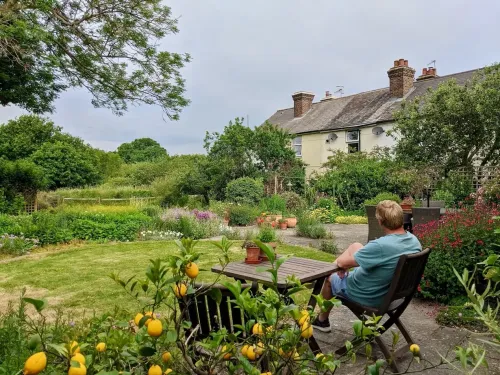
How to create a garden for people and wildlife
Volunteer Wild About Gardens Advisor Penny Brook takes us on a journey through her garden to share how they create a flower-filled haven for both people to relax and wildlife to flourish.
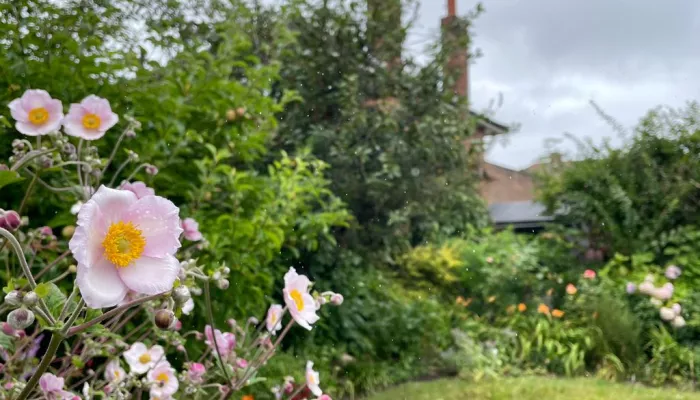
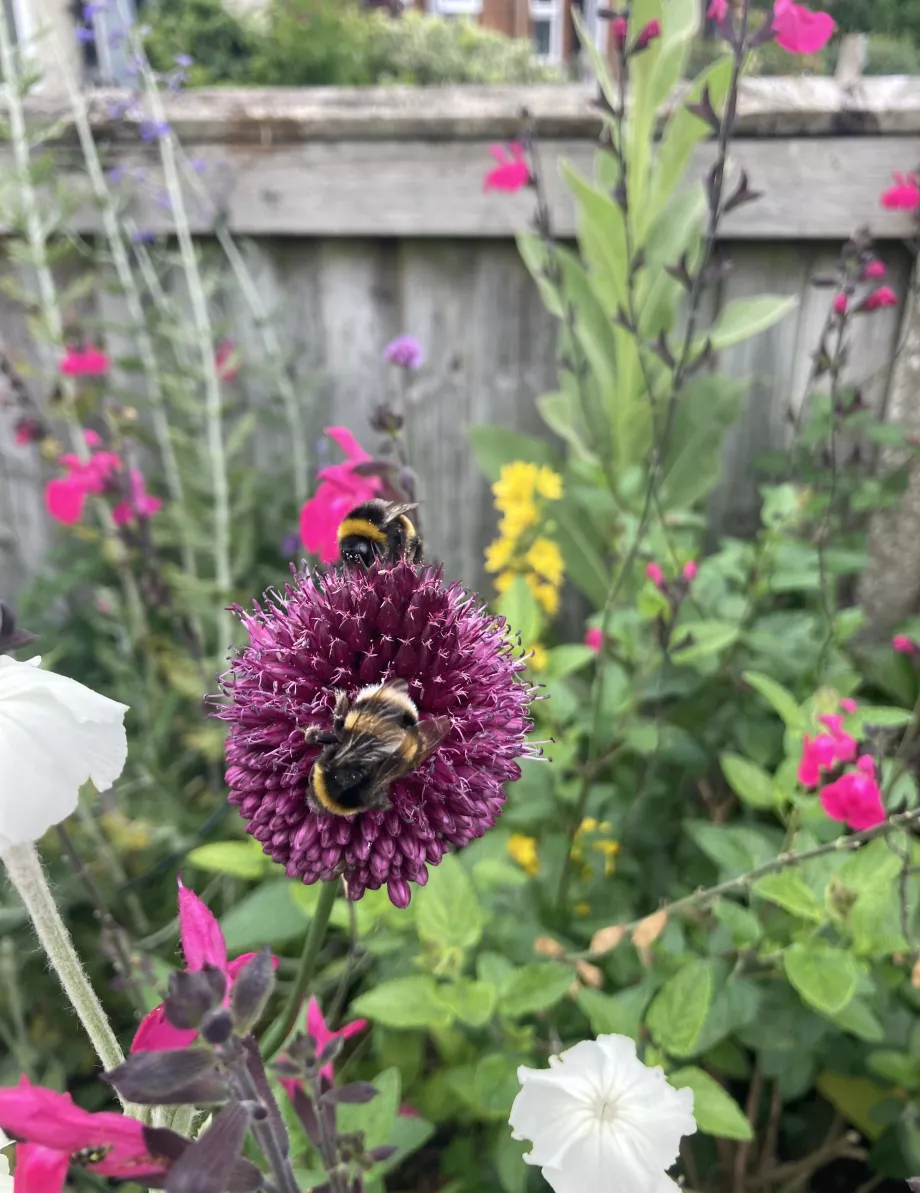
Bees in Ellen's garden.
Like many gardens, it consisted of a lawn, a concrete path, some decking and flower beds that had been replaced with shingle. It isn’t a huge space, but over the years I have made the lawn smaller with a mini meadow along one side, turned the shingle back into flower beds and a vegetable growing area, and treated myself to a little greenhouse where I grow tomatoes. Not only has this created so much beauty and enjoyment, but we have been lucky enough to have so many wildlife visitors – from hedgehogs to newts, bats, hummingbird hawk-moths, and more. These are some of the top tips from my garden.
Water is key to a wildlife-friendly garden and even in a small space, dishes of water on the ground can provide a source of water for birds, bees, and more. I have been lucky enough to have a hedgehog who regularly visits a bird bath on the ground in my front garden. If you have space for a larger pond, it’s vital to make sure wildlife like hedgehogs can safely get in and out by including a ramp or stepped edges. If not, just a dish of water will do!
How to build a pond How to provide water for wildlife
It can be difficult if you plant out seedlings you have been carefully growing for months, only for them to be eaten overnight! I try to protect plants using barriers such as Enviromesh netting and deterrents such as spent coffee grounds around the base of vulnerable plants, as well as using sacrificial plants. Try not planting seedlings out until they are well established, accepting that a few might get munched. We also need to learn to accept some damage – as the saying goes, “If nothing is eating your plants then your garden isn’t part of the ecosystem!” Our gardens shouldn’t be ‘perfect’, static images, but living, breathing spaces.
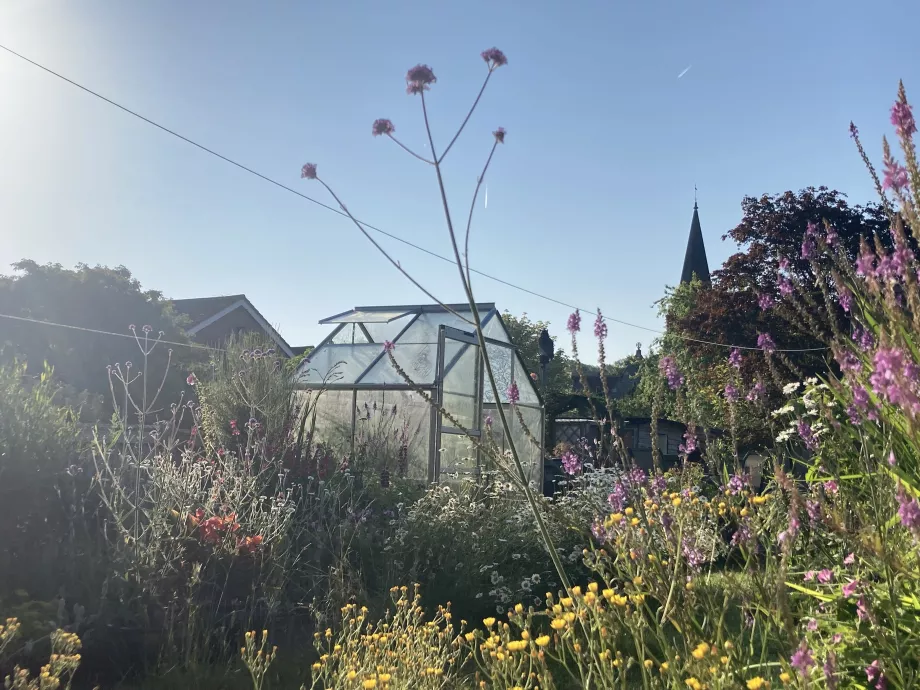
A summer day in Ellen's garden.
Previous gardening practices told us to ‘tidy away’ any ‘dead’ plant matter and to put our gardens to bed over winter. A wildlife-friendly garden doesn’t mean a messy garden, but one where you edit plants rather than tidy. If a plant goes to seed, leave the seedheads as a source of food for birds and habitat for invertebrates – some are beautiful for winter interest too. If a plant self-seeds, edit what you don’t want and enjoy what you do! If you have fallen leaves and twigs, these too can create brilliant habitat for many creatures, rather than being swept up.
My garden is a mix of shrubs, native and non-native flowers, small fruit trees and fruit bushes, and some annual flowers and vegetables. Diversity is key for wildlife and creating a beautiful garden. As is incorporating year-round flowering for us and pollinators to enjoy. Often our gardens focus on summer blooms, but nothing lifts my spirits more than seeing the first bulb pop through in spring, or the bees enjoying some winter pollen. Many people opt for annual flowers, but by choosing perennial plants, your garden will be more resilient and provide ongoing habitat and pollen.
The Wild About Gardens team run talks, workshops, open gardens, and more. Join us at an upcoming event to get inspiration, advice and treat yourself to some cake and wildlife-friendly plants!
Our next open garden is at Langdon Court near Faversham on 14 September 2024 from 1pm to 5pm. As well as Kent Wildlife Trust, we will be joined by plastic-free garden centre Edibleculture, and wildlife experts to give advice on everything from ponds to bees and hedgehogs. Find out more and book below.

Volunteer Wild About Gardens Advisor Penny Brook takes us on a journey through her garden to share how they create a flower-filled haven for both people to relax and wildlife to flourish.
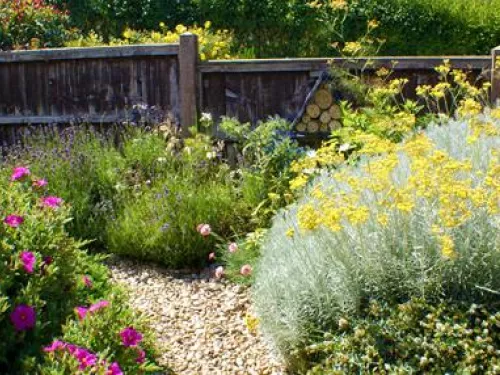
Wild About Gardens Officer Ellen Tout shares how we can all turn our gardens into wildlife havens with these top tips.
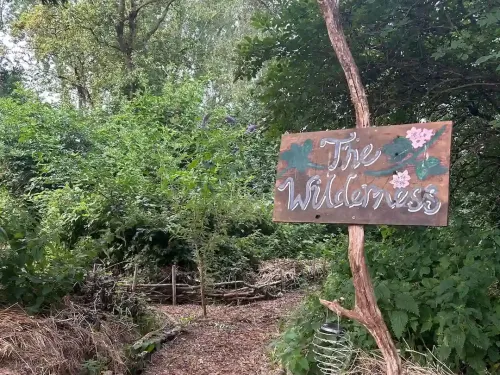
This blog about garden wilding is written by Sally Edge, the owner/founder of Langdon Court, where we will host an open garden for the third time in 2025!